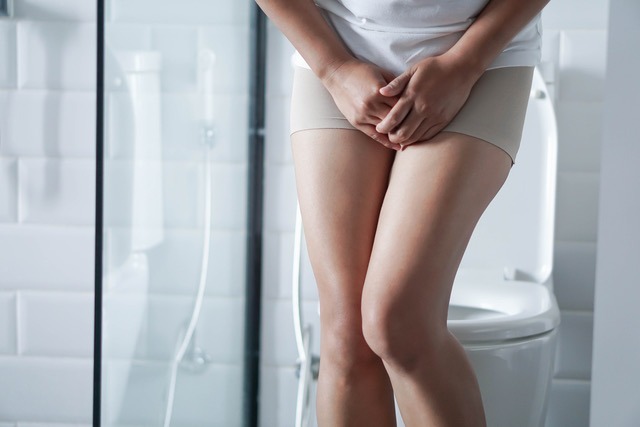The overactive bladder is characterized by a limited ability to control the urge to urinate. The need to urinate is intense and imminent, without necessarily having a full bladder. Urinary frequency is often increased day or night, and there may be associated leakage.
Does that ring a bell? If so, you are not alone! Overactive bladder increases with age and is more common in women.


What are the diseases that can reproduce symptoms of an overactive bladder in women?
- Diabetes, multiple sclerosis, Parkinson's disease.
- Recent surgery (eg. orthopedic surgery, or intervention on the bladder or reproductive organs).
- Spinal cord injury, stroke, Alzheimer's disease.
- Urinary tract infections.
- A tumor or inflammation of the bladder.
- Nocturnal polyuria (frequent need to urinate at night).
What are the symptoms of an overactive bladder in women?
- Frequent need to urinate (pollakiuria).
- Urgent need to go to the toilet regularly, with the apprehension of having to urinate at inappropriate times (urgent urination).
- Urine leakage, when the person cannot get to the bathroom on time (urge incontinence).
What are the risk factors which may contribute to an overactive bladder in women?
- Increased consumption of caffeinated beverages.
- Urinary tract infection.
- Nervous system disorders.
- Menopause with presence of vaginal atrophy.
How can a woman prevent having an overactive bladder?
- Above all, by not limiting the level hydration, but simply by drinking differently.
- By avoiding certain drinks that are irritating to the bladder, such as: alcohol, caffeinated drinks, carbonated drinks, acidic fruit juices.
- By avoiding certain foods: citrus, spicy foods, vinegar, chocolate.
- By not drinking after supper or three hours before going to bed.
- By systematically emptying the blader before going before bed.
How can an overactive bladder in women be diagnosed?
If there are signs and symptoms of an overactive bladder and they become bothersome, Dr. Marois will thouroughly evaluate the patient and ask for some tests.
These may include the following:
These may include the following:
- Medical history and physical examination
- Vaginal examination
- Questionnaire to assess the severity of bladder disorders and how they affect quality of life
- Urine analysis
- Urinary journal over several 24-hour periods
- Blood tests (eg. creatinine)
- Ultrasound of the kidneys or bladder
- Post-urination bladder ultrasound to determine the amount of urine that remains in the bladder after urination
- Cystoscopy
- Urodynamic assessment
What are the non-pharmaceutical treatments for an overactive bladder in women?
For treatments for overactive bladder to be effective, one must be fully committed to following some basic advice:
- Various lifestyle changes (eg. avoid caffeine and alcohol).
- Supervised bladder rehabilitation.
- Various exercises in perineal rehabilitation, to limit the urge to urinate.
- Stimulation of the tibial nerve (located at the ankle) which plays an important role in the management of the bladder. This technique is taught in Marois clinics.
What are the pharmaceutical treatments for an overactive bladder in women?
- In postmenopausal women, hormone therapy improves vaginal dryness which in turn, can contribute to relieving symptoms of an overactive bladder.
- Specific drugs to reduce the number of urges and limit leaks: anticholinergics are thought to work by blocking the stimulation of the detrusor, which causes involuntary contractions. The anticholinergics available in Canada are Darifenacin, Fesoterodine, Flavoxate, Oxybutynin, Solifenacin, Tolterodine and Trospium. Most of these drugs are available as tablets and some are taken only once a day. Oxybutynin is also available in the form of transdermal patches or gel.
- The most common side effects are dry mouth and constipation.
- Mirabégron is a new type of overactive bladder medication that does not cause constipation or dry mouth.
Treatments offered at Cliniques Marois
- Intra-vesical Botox injections
- Conventional treatments (eg. pharmaceuticals, lifestyle advice, reference in perineal rehabilitation, TENS protocol, etc.)
Rapid examinations at Cliniques Marois
- Medical examination (eg. questionnaires, voiding calendars, etc.)
- Cystoscopy
- Urodynamic assessment
- Hormonal replacement therapy in women


